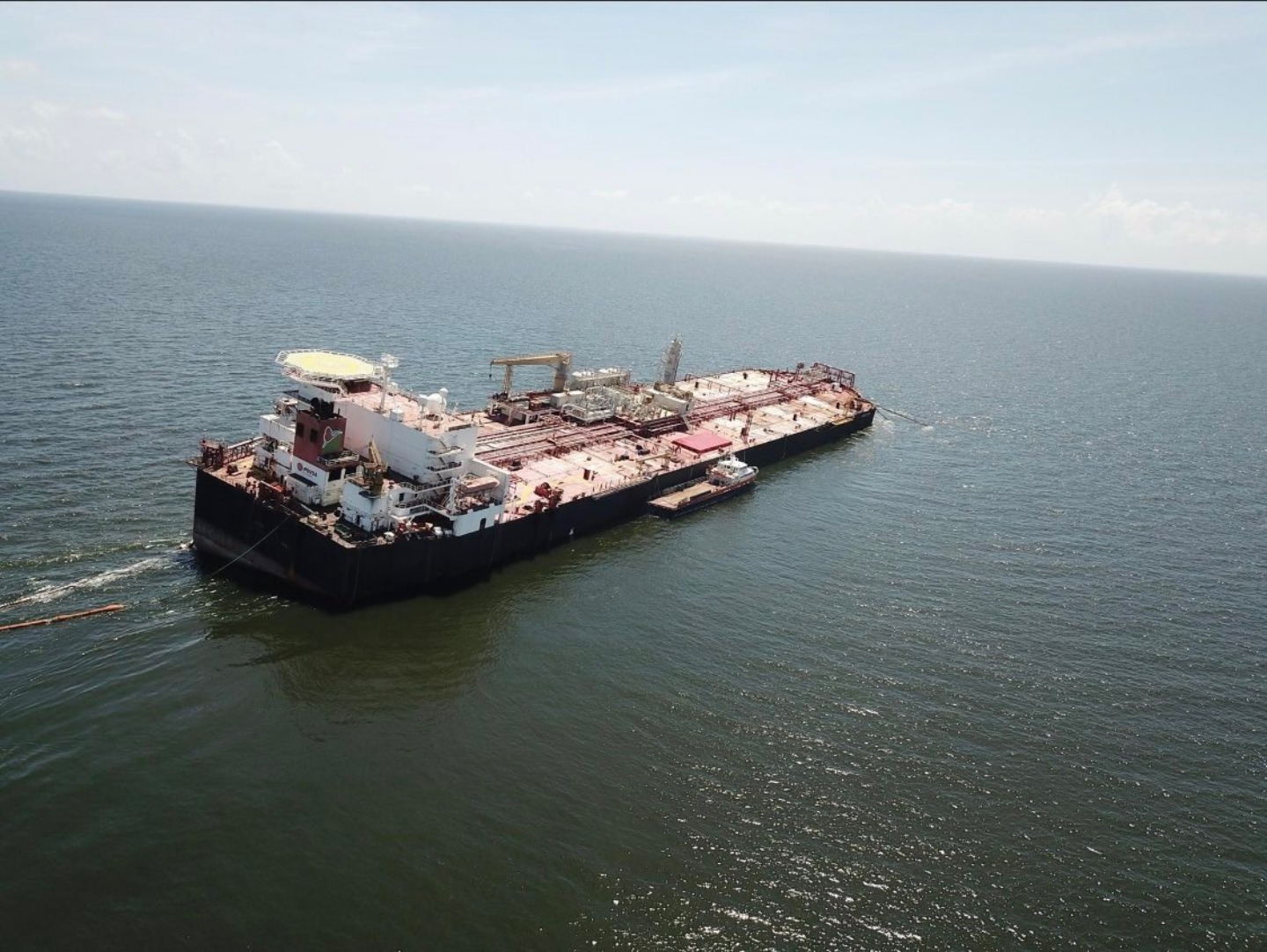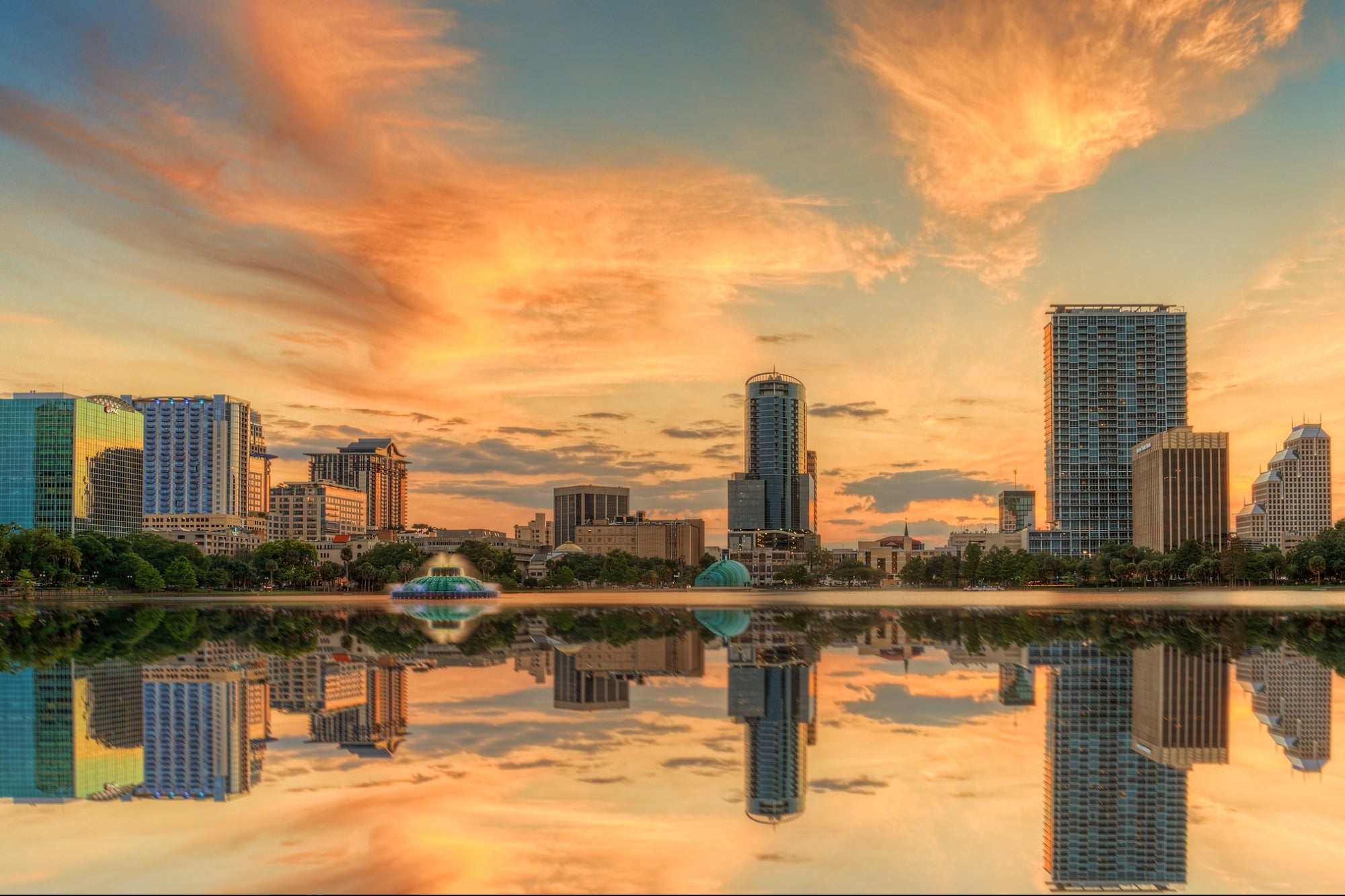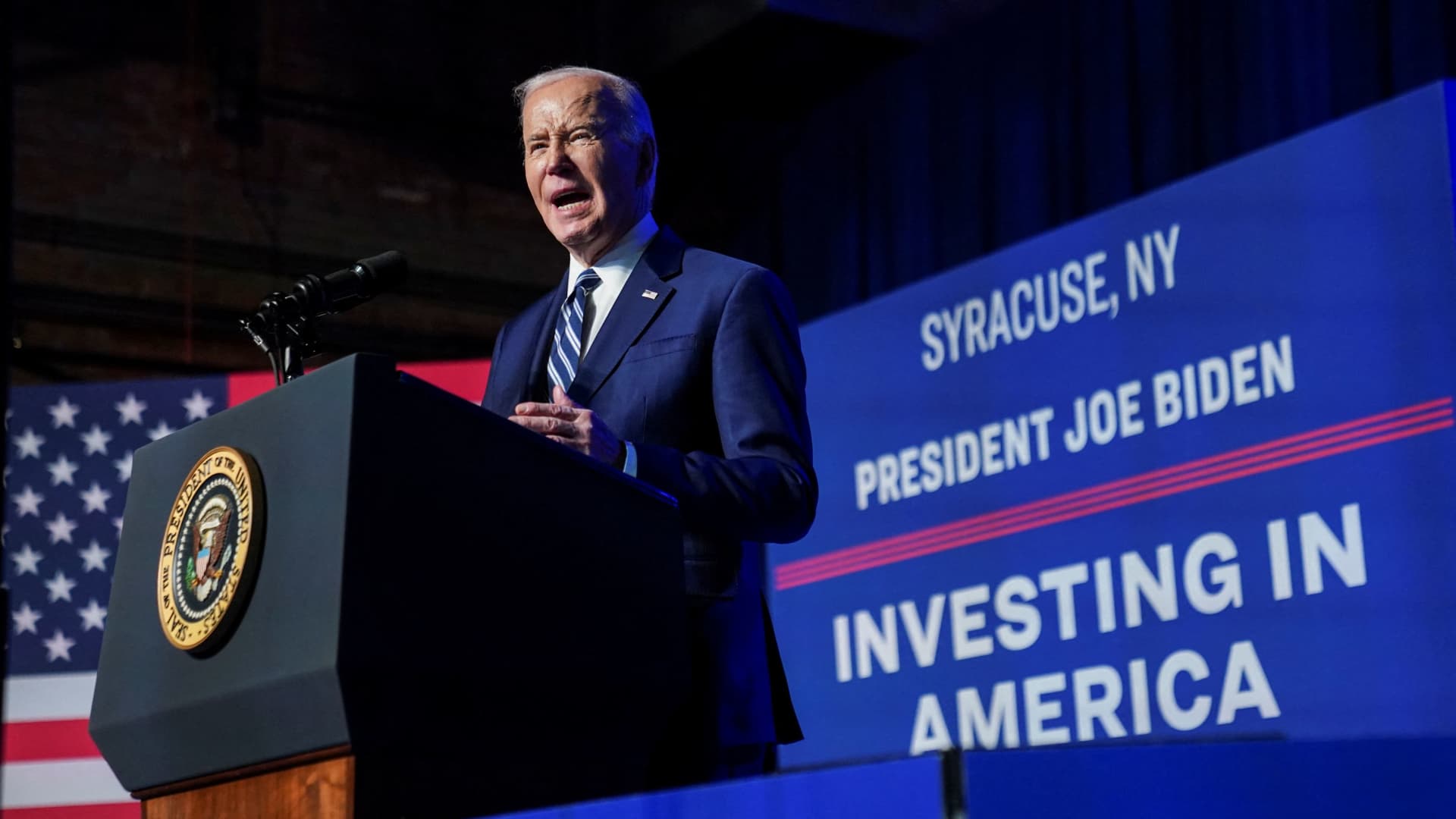For over a decade, the Nabarima has sat anchored in the Gulf of Paria, an enclosed stretch of sea between Venezuela and the island of Trinidad. Photo courtesy of Fishermen and Friends of the Sea.
For over a decade, a Venezuelan oil storage ship, the Nabarima, has sat anchored in the Gulf of Paria, an enclosed stretch of sea between Venezuela and the island of Trinidad.
Before the United States imposed heavy sanctions on Venezuela in 2017, the Nabarima, a red-hulled, 240-meter monstrosity, served as a petroleum storage vessel, meeting routinely with tankers that loaded and unloaded barrels of oil from Venezuela to sell all over the world.
The sanctions that prohibit Venezuela from selling its oil on the international market caused the nation’s oil industry to grind to a halt, leaving production suspended at a 25-year low. Since January 2019, the Nabarima has been caught in a pattern of swift, mechanical decay.
If the ship should sink completely, over a million barrels of crude oil, over 60 million gallons, could upend and pour into the ocean, causing one of the largest oil spills in history, six times larger than the Exxon Valdez spill in 1989.
Following the death of former President Hugo Chávez and the ascension of President Nicolás Maduro, a toxic brew of hyperinflation, sanctions, and corruption caused PDVSA, the state-owned petroleum company, to fray uncontrollably at the edges.
By 2017, the company could no longer afford to export oil, leaving tankers abandoned in the Caribbean Sea.
In drone footage from this month, the Nabarima looks weathered, adorned with discolored, wine-red piping and a solitary yellow construction crane. The deck of the ship is bare and quiet, although at least three crew members live and work aboard. Since mid-July, the condition of the ship has provoked regional and international alarm, as the vessel appears to be dipping to a conspicuous extent, first at 5 degrees, then at 20 degrees to the right, slumping 43 feet lower in the water. On the starboard side, waves lap dangerously close to the deck.
The spill could have “catastrophic effects,” Gary Aboud, an environmental activist with the local nonprofit Fishermen and Friends of the Sea, told VICE News. An environmental consulting firm in Trinidad and Tobago, Coastal Dynamics, created a model of the potential spill, illustrating how oil would seep through the Gulf of Paria and perhaps further, damaging the marine ecosystem of a large portion of the Caribbean Sea.
“The king mackerel that you get on the Eastern Seaboard of the United States spawn here. There are the community fishers—we have about 50,000 people who depend on the sea. There are human health issues as well—the hydrocarbon would have an everlasting impact on the quality of our seafood,” said Aboud.
The Venezuelan government, through its ambassador to Trinidad and Tobago, claimed the vessel poses no risk of a spill, although it admits that the ship was tilting for a period over the summer. The ambassador asserted that the photos recently circulating online of the ship tilting are “propaganda”. In parallel, ENI, the Italian oil company that owns 26% of the vessel, said there is “currently no risk” of a spill. In a press release in September, the Ministry of Energy of Trinidad and Tobago argued the vessel’s double hull “should provide protection from spillage in the event that the vessel sinks.”
But Dr. Alok Verma, chair of marine engineering at Texas A&M University, told VICE News, “If the vessel sinks, the possibility for leakage increases, certainly.”
In late October, several members of the Venezuelan National Assembly appealed to President Maduro and PDVSA to “evade this disaster”. Similarly, Trinidad and Tobago’s Ministry of Energy, while accepting the Venezuelan government’s rosy outlook at first glance, negotiated with the Venezuelan government to send a crew to the Nabarima to conduct an inspection on October 20.
In a press conference on October 22, the Trinidadian Minister of Energy said the Nabarima was “totally horizontal” when the crew visited the ship, yet Trinidad and Tobago plans to request another visit in a month to ensure the ship has not sprung another engine-room leak and resumed its leaning.
If the Nabarima is fated to tilt quietly until it plunges, responsibility lies in the hands of the two oil companies, PDVSA and ENI, to evacuate barrels of oil from the ship before it goes under. While it was reported both companies have struggled to secure a foreign vessel to collect the cargo while side-stepping United States sanctions against Venezuela, even the U.S. Embassy in Trinidad urged PDVSA to take action. A statement affirmed the sanctions program “is not designed to target activities addressing safety, environmental, or humanitarian concerns,” meaning the sanctions should not prohibit a foreign vessel from collecting the oil.
Tugboats were spotted alongside the Nabarima on October 19, and an oil tanker was observed approaching the Nabarima on October 21, suggesting that a transfer of some or all of the oil could be imminent. However, the process of oil transfer could present a risk of spillage as well due to the delicate condition of the Nabarima. The Trinidadian Ministry of Energy calculated the offloading process would take 35 days, in a plodding chain of Nabarima to tug boat, tug boat to tanker, until the tanker is full and must return to the Venezuelan mainland, then repeating the series of steps two more times, giving the Nabarima ample time to resume its tilting.
The incoherence of information and statements circulated by officials for the parties involved over the past several months has proven frustrating for Fishermen and Friends of the Sea. “It is disgusting that they would jeopardize an entire region for the sake of their petty politics… We need to get access. We need to know firsthand,” Aboud said.
In a video taken from a trek into Venezuelan waters to assess the Nabarima up close, Aboud shouts above the ocean’s gusts, “You can see it for yourself! We’re not imagining it!” pointing behind his shoulder at the drooping, black edge of the ship.


















